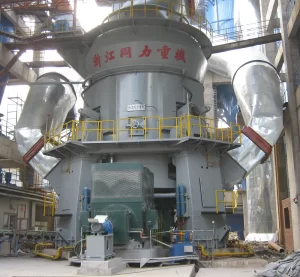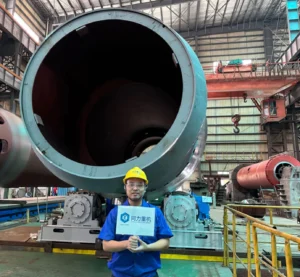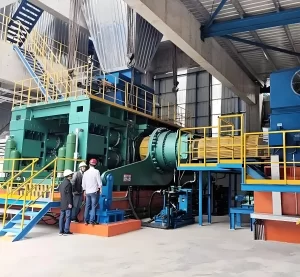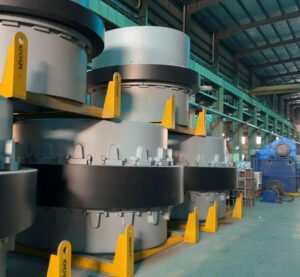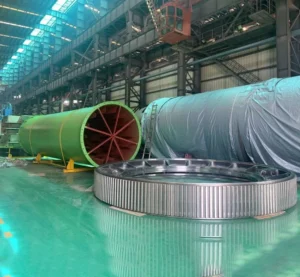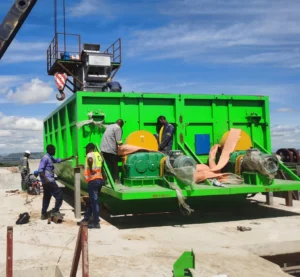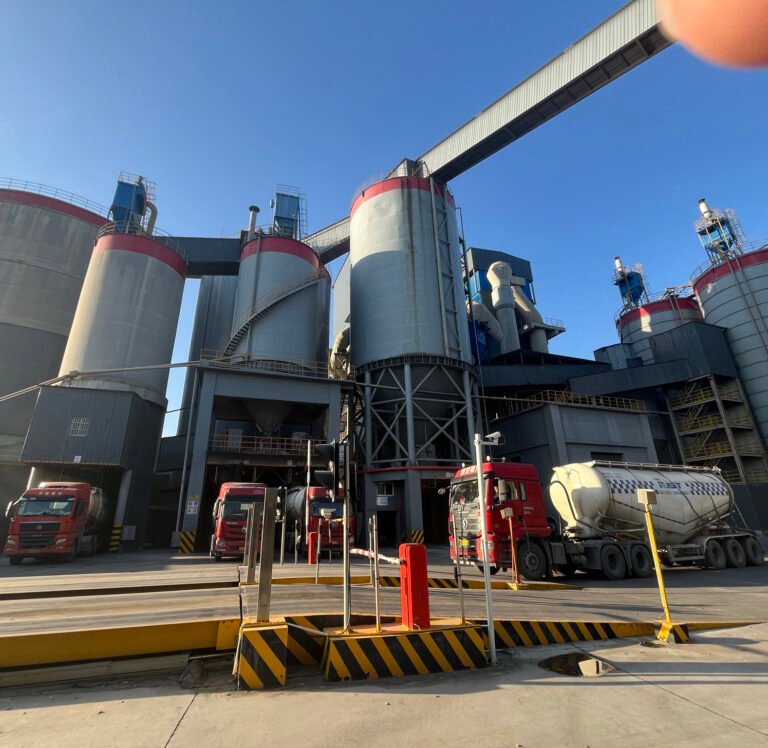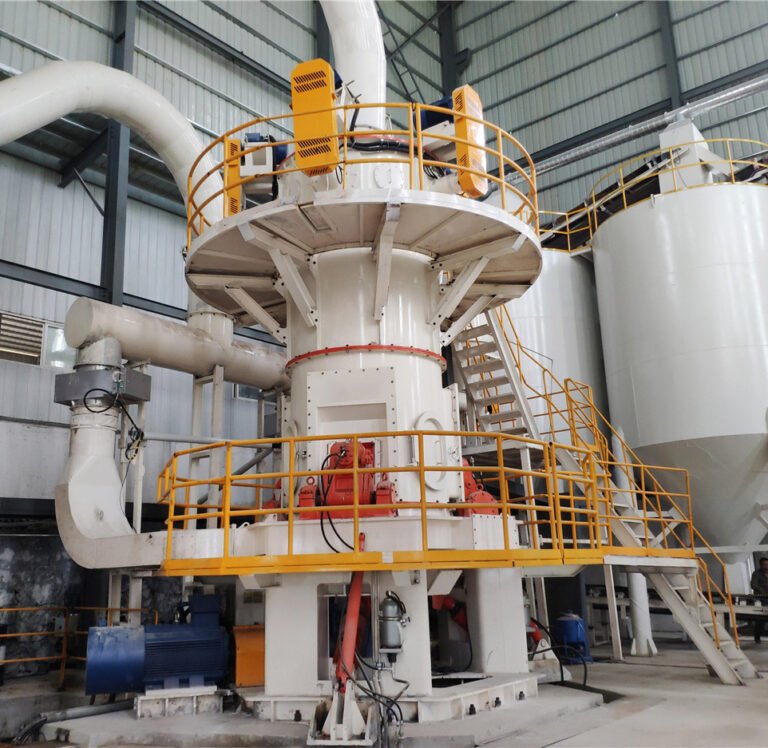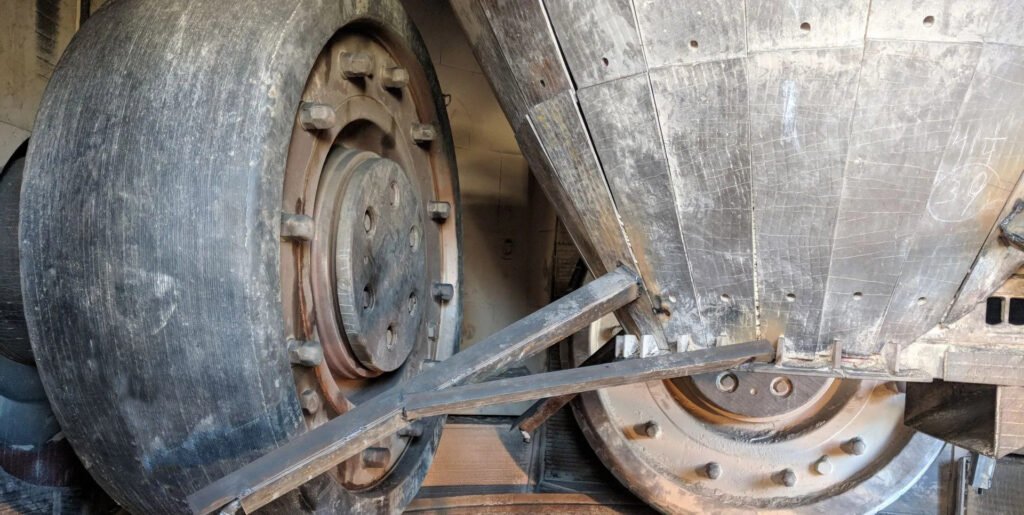
What is hard facing of vertical roller mill grinding roller tyre?
The grinding rollers of a vertical roller mill, especially the outer roller sleeves/liner, and the grinding discs/table, primarily the upper linings, are core components that come into direct contact with the hard material like slag. They are subject to constant compression and friction, making them particularly susceptible to wear. Overlay hard facing welding of vrm grinding rollers and vrm gridning table involves using specialized welding equipment to deposit a high-hardness, wear-resistant alloy material onto these worn surfaces. This not only restores the dimensions of worn or deformed components, restoring precision, but also makes the surface more wear-resistant and impact-resistant. Ultimately, this extends the service life of the grinding roller and more importantly: to restore the high capacity and effieiency of the vertical cement mill. If you need hard facing for your vrm, contact us today!
Why hard facing is the key to the effieiency of the vertical mill?
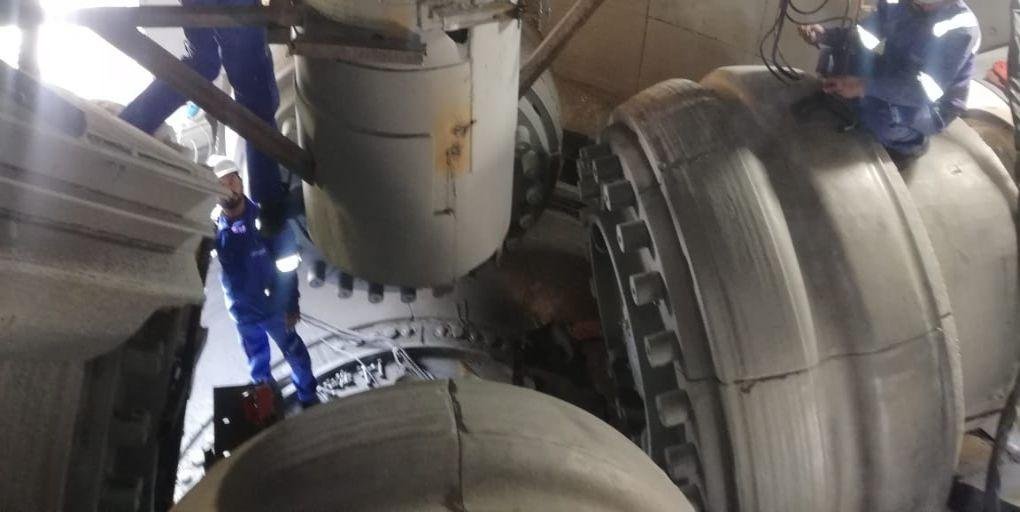
Components of Vertical Roller Mills (VRMs) endure severe wear conditions during operation—and this issue becomes even more pronounced when processing materials with 25% high silica content and industrial slags such as granulated blast furnace slag and steel slag, common additives in cement production, which are widely handled in cement mills. This wear directly hits a plant’s bottom line: for instance, a VRM roller with just 5mm of uneven wear can reduce grinding efficiency by 8–12%, leading to a corresponding increase in energy consumption by 1.2–1.5 kWh per ton of cement clinker and driving up overall milling costs. In short "hard facing is the optimal wear protection for highly abrasive grinding conditions"-said by fl-smidth.
Increased equipment vibration due to worn of the grinding roller
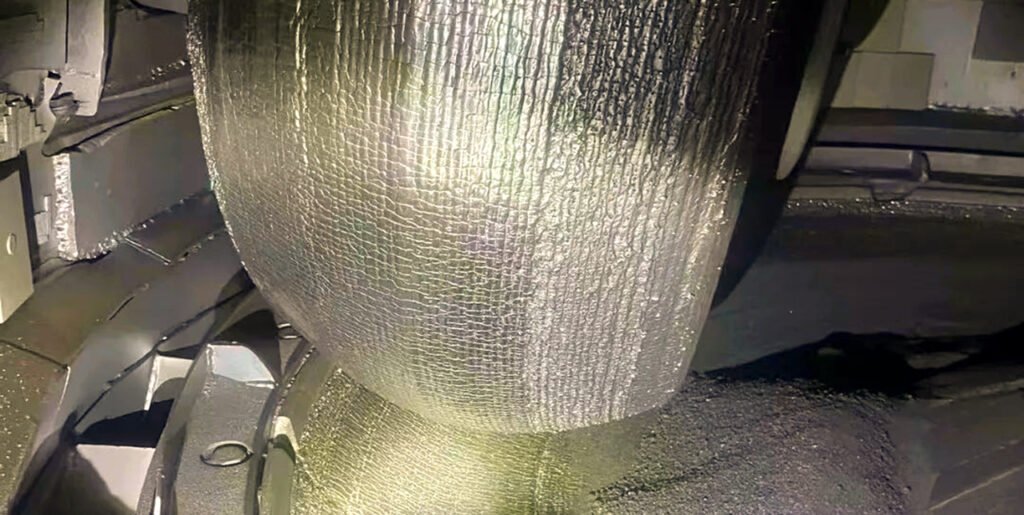
Excessive wear on mill linings (e.g., VRM grinding table liners) can further trigger a 20–30% increase in equipment vibration levels. This not only worsens the wear rate of adjacent components (like roller bearings and hydraulic systems) but also poses a significant risk of unexpected equipment damage—potentially causing unplanned downtime that can cost a cement plant 50,000–150,000 per day in lost production.
20+ years of hands-on experience on VRM
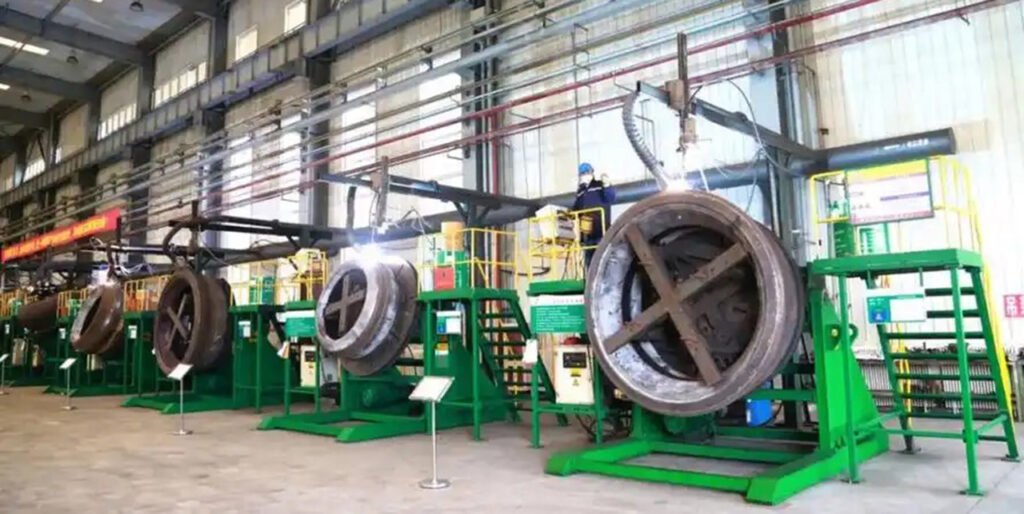
Backed by over 20+ years of hands-on experience in mill operations supporting more than 300 cement and cement processing plants globally, we tongli as a manufacturer deeply understand the root causes of VRM wear from material abrasiveness to improper mill pressure settings), how it disrupts daily operations, and most importantly how to mitigate it effectively. Our expertise applies not only to the VRM systems we manufacture but also to any VRM model in your production line, regardless of the original equipment brand. To deliver top-tier solutions, we’ve partnered with former engineers from Loesche and magotteaux—a global leader in hard facing services with a 75+-year track record—to co-develop a wear protection offering that balances long-term durability extending component lifespan by 120–180% compared to standard parts and operational flexibility.
Backed by world renowned technology
Former Loesche engineer and magotteaux engineer’s industry-leading hard facing knowhow including proprietary alloy formulations is combined with our in-depth analysis of VRM wear part material compositions (e.g., high-chromium cast iron or Ni-hard alloys). This synergy allows us to recommend the optimal welding deposit materials, while ensuring on-site services are executed to the highest quality standards by a team of ASMR certified expert fitters with an average of 10+ years of VRM maintenance experience.
Waste to Value service
What’s more, our cement vertical roller mill wear segments, including those with welded overlay layers—are fully recyclable at the end of their service life. This makes them a far more sustainable choice than non-recyclable ceramic-based wear solutions, as they reduce industrial waste by up to 70% and lower the carbon footprint associated with replacing worn parts.
VRM refurbishment
Our hard facing services can also be bundled with other critical vertical cement mill maintenance offerings. These include our VRM re-start service, which uses precision laser alignment tools to ensure optimal mill setup (e.g., roller gap tolerance within ±0.1mm) after refurbishment, and our grinding circuit walkthrough. The latter provides a comprehensive evaluation of the entire grinding system (from feeders to separators) and includes in-depth inspection and data-driven analysis of critical elements like VRM hydraulic pressure systems and air classification efficiency.
What are the adventages of surface wear-resistant welding
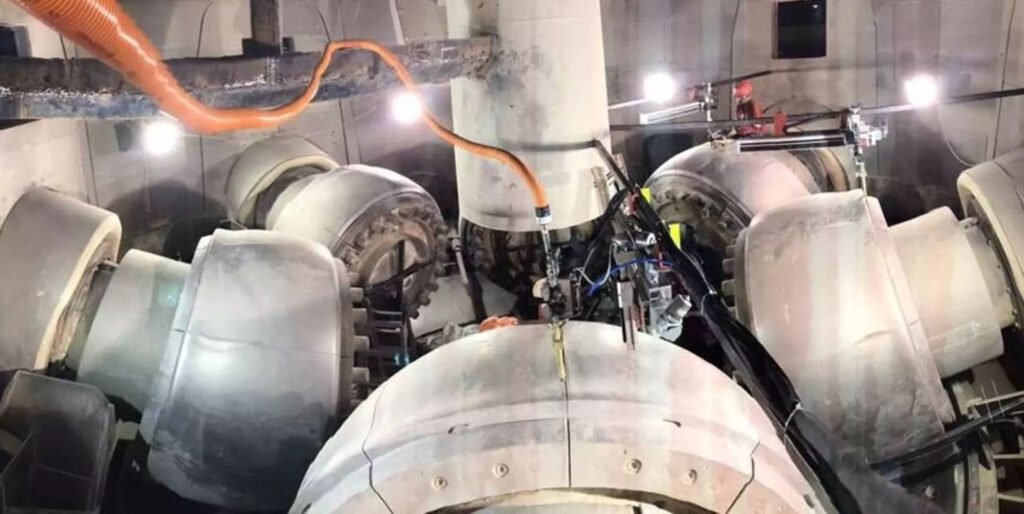
Extended Wear Life
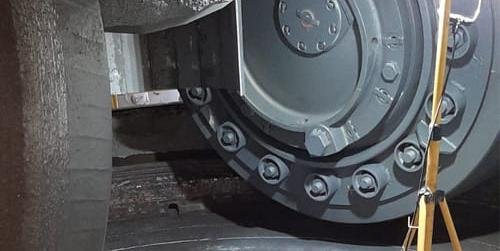
Our highly controlled welding process: engineered with precise parameters (280–320A current, 30–32V arc voltage, and <220℃ interpass temperature) to ensure optimal metallurgical bonding between the hard facing layer and the base material like high-chromium cast iron or Ni-hard alloy. This bond delivers a wear solution that extends component lifespan by 150–200% compared to standard uncoated parts, directly translating to 30–40% more uptime for your slag vertical roller mill. Before any hard facing work begins, each wear segment undergoes individual inspection against tongli’s strict ISO quality standards (including dimensional checks with ±0.05mm tolerance and non-destructive testing for hidden cracks), guaranteeing consistent, industry-leading results.
On-site repair inside of the vertical roller mill grinding chamber:
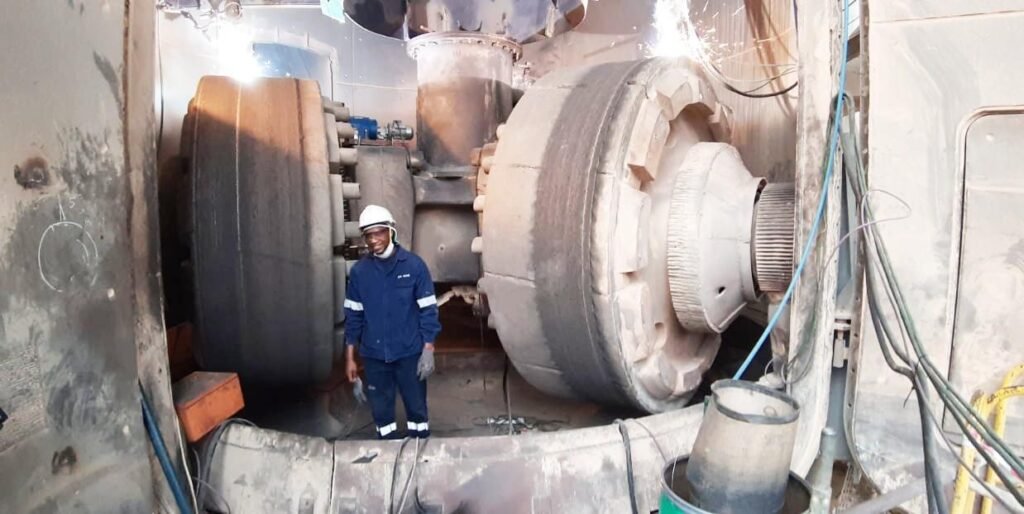
Hard facing also enables a reusable wear solution: Hi Chrome segments, in particular, are designed for repeated hard facing, they can be refurbished 3–5 times over their lifetime. Crucially, this refurbishment is done in situ (on-site at your plant), eliminating the need to remove the 10 ton grinding roller assembly. This not only restores the segment to its original surface profile (with a runout tolerance of ≤0.1mm) but also cuts downtime for maintenance by 50–60% compared to off-site repairs, ensuring your VRM maintains high grinding performance (e.g., 90%+ of original throughput) consistently. Additionally, hard facing can be re-welded on most VRM critical components including vertical mill grinding rollers and grinding tables slashing the equipment’s wear rate by 40–55% in high-abrasion scenarios (such as slag or high-silica cement raw material grinding).
Minimum down time
As noted, the in-situ nature of our hard facing service is a key driver of reduced downtime. For example, refurbishing a full set of VRM wear segments (4–6 pieces) on-site takes just 2–3 days, whereas off-site refurbishment (including disassembly, shipping, and reinstallation) can take 1–2 weeks. This rapid turnaround minimizes production losses, for a typical cement mill producing 5,000 tons/day, this translates to saving 15,000–25,000 tons of output per maintenance cycle. The in-situ process also preserves the VRM’s overall alignment (critical for stable operation), avoiding the vibration issues that often arise from re-installing components that have been transported off-site. Saving you money more importantly!
Waste to value, adhere to the Heath Safety Environment HSE
Hard facing for cast iron wear parts not only creates longer-lasting surfaces (even in highly abrasive conditions, such as grinding materials with 30%+ silica content) but also reduces material waste through repeated in-situ refurbishments. Over the entire lifetime of a VRM typically 20–25 years, this cuts the need for replacing wear parts by 60–70%, lowering total material consumption and associated costs. When a wear piece finally reaches the end of its usable life, it can be fully recycled at any standard iron foundry—no special processing is required, as the hard facing alloy is compatible with standard cast iron re-smelting. This makes our hard facing solutions far more sustainable than ceramic composite segments. Ceramic composite parts require complex, energy-intensive processes to remove their ceramic layers which are inert and non-meltable in standard foundry conditions before re-smelting. As a result, over 90% of foundries refuse to accept ceramic composite parts for recycling, most end up in landfills, creating long-term waste. In contrast, our recyclable cast iron wear parts reduce landfill waste by 85–90% and lower the carbon footprint of VRM maintenance by 25–30%.
How to tell a vertical roller mill grinding roller need hard-facing?
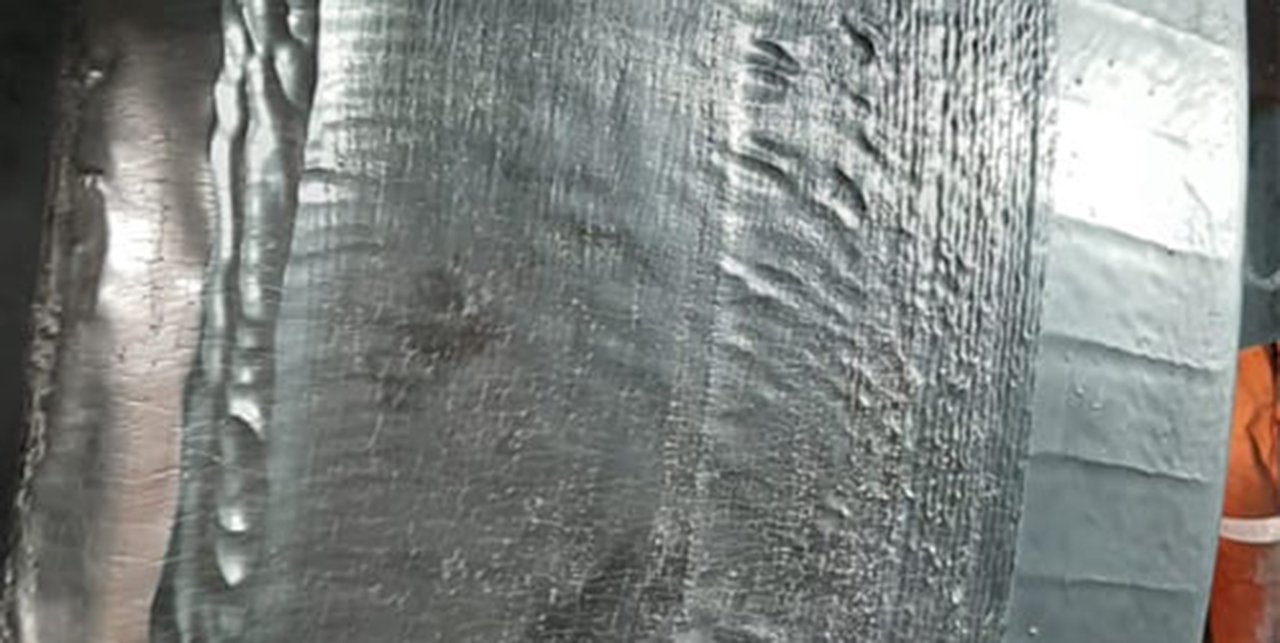
To determine whether a slag vertical mill roller requires hardfacing, consider the following indicators: roller sleeve/tyre/liner wear depth exceeding 30% of the original thickness (15-20mm), local pits and grooves greater than 5mm deep, or a diameter deviation of more than ±3mm; mill hourly output reduced by more than 10%, power consumption increased by 8-12kWh/t, and grinding pressure exceeded normal by 15% (excluding other factors); mill horizontal vibration greater than 5mm/s, frequent abnormal noise, or roller surface temperature difference greater than 15°C; and continuous operation for 3000-4000 hours (reduced to 2500 hours for slag SiO₂ greater than 30%). Even if these indicators are not met, inspection is still required. Below is a more comprehensive explaination of each of the indicators above:
Roller Sleeve Wear: A Visual Indicator of Dimensional Deviation
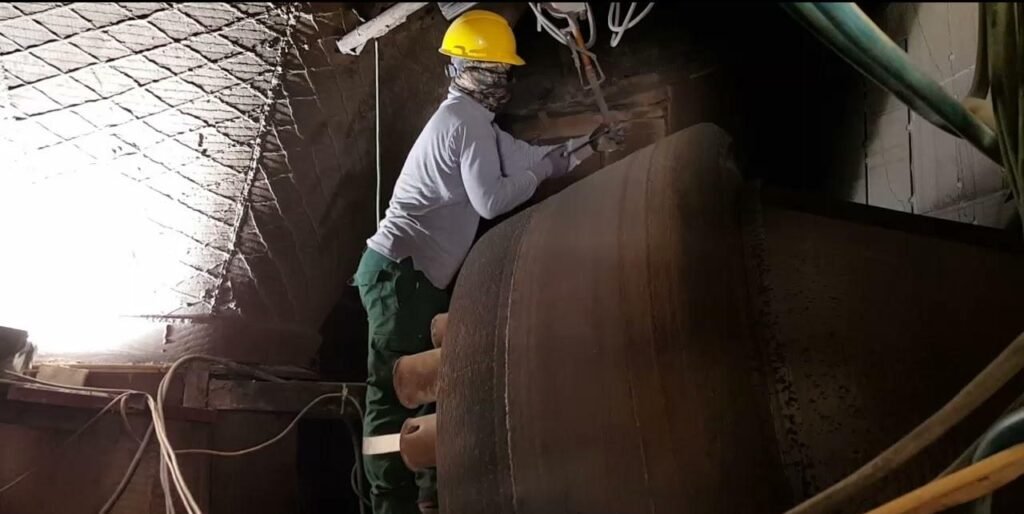
The physical wear of the roller sleeve is the primary indicator for determining whether to initiate hardfacing. This must be confirmed through manual measurement or laser inspection after the machine is shut down. When the average wear depth on the roller sleeve exceeds 30% of the original design thickness—for example, for a typical 100mm thick roller sleeve, a wear depth of 30mm indicates a warning sign. If pits or grooves greater than 5mm in depth appear (potentially leading to uneven material grinding), and the actual roller sleeve diameter deviates by more than ±3mm from the original design diameter, hardfacing must be initiated. This is because slag vertical mills rely on a precise gap between the grinding roller and the grinding disc to achieve material bed compression and grinding, and wear exceeding this range can disrupt material bed stability and directly impact grinding efficiency.
Mill Operating Parameters: Indicators of Hidden Performance Abnormalities
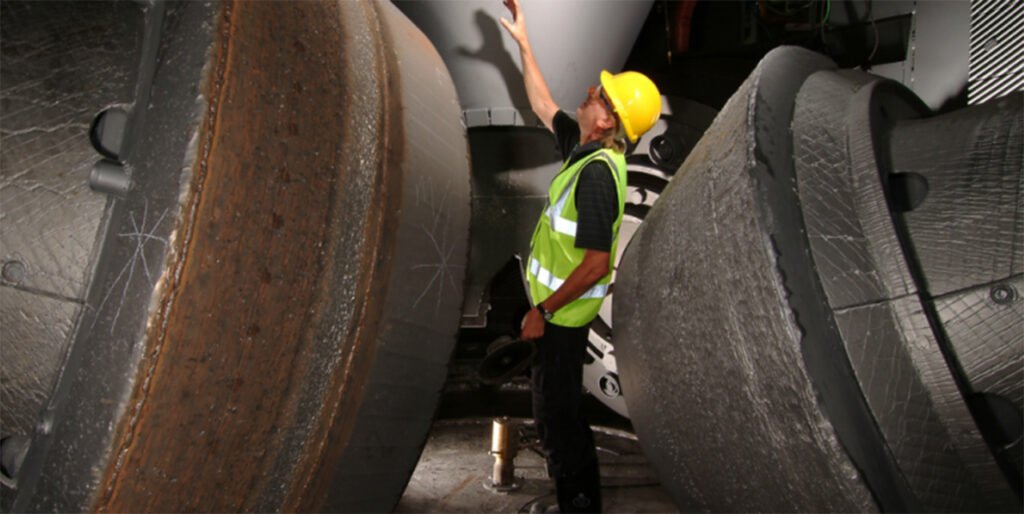
Abnormal changes in operating parameters are indirect but accurate indicators of roller wear and require continuous monitoring in conjunction with data from the central control system. If the hourly output of a slag vertical mill drops by more than 10% compared to normal operating conditions, for example, from 200t/h to below 180t/h, if the specific power consumption increases by 8-12kWh/t (grinding the same mass of slag requires more power), or if the grinding pressure increases abnormally by more than 15% (for example, from 25MPa to 28.75MPa) while the material properties (particle size, moisture) remain unchanged, then, after eliminating other factors such as air volume and classifier speed, it can be determined that the grinding roller's grinding capacity has decreased due to wear, and surface restoration requires welding.
Equipment Operating Status: Real-Time Abnormal Performance Indicators
Vibration, abnormal noise, and temperature distribution during equipment operation are real-time "early warning signals" of grinding roller wear. Vibration sensors monitor the mill's horizontal vibration, indicating that if it exceeds 5mm/s (far exceeding the normal range of 2-3mm/s), or if noticeable "metallic clashing" or "frictional" noises are heard during operation, this indicates uneven wear on the roller surface (such as localized ridges or depressions), leading to unbalanced contact with the grinding disc and the material. Furthermore, infrared thermometers are used to monitor the roller surface. If the temperature difference between different areas exceeds 15°C (normally within 5°C), this indicates uneven wear leading to localized overheating, which can worsen equipment damage over time. In this case, an emergency shutdown is necessary for inspection and cladding.
Operating Cycle and Material Properties: Preventive Calibration Indicators
Given the high hardness and high abrasiveness of slag, which often contains more than 30% SiO₂, a preventive calibration cycle is necessary to prevent excessive wear. Typically, after 3,000-4,000 hours of continuous operation, a slag vertical mill roller should be shut down for inspection, even if no obvious abnormalities are observed in the aforementioned indicators. If the SiO₂ content of the slag being ground exceeds 30% (making it more abrasive), the inspection cycle should be shortened to less than 2,500 hours. This indicator, based on industry practice data from slag grinding, effectively prevents sudden drops in grinding efficiency or equipment failures caused by "hidden wear" (insufficient overall thickness despite no visible surface pits), and is key to proactively avoiding risks.
What material is used for hard facing of vrm grinding roller? Magotteaux neoX®
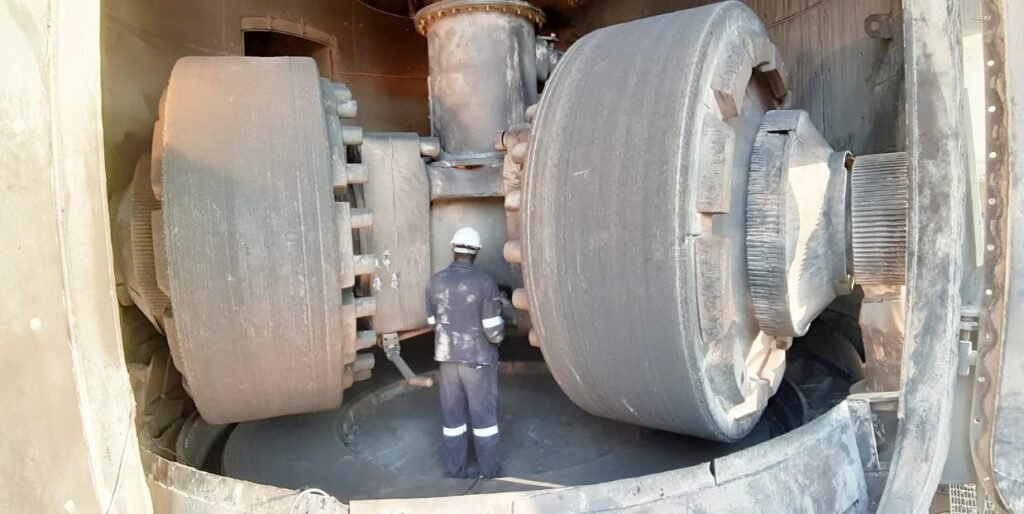
In the field of vertical roller mill and coal mill grinding technology, the choice of hardfacing material directly determines the service life of rollers, liners, and grinding tables. Over the years, many operators have relied on high chromium alloy welding layers to restore worn surfaces. However, with the growing demands of cement production, power generation, and mineral grinding, a new approach has been developed: the combination of high chromium alloy with ceramic reinforcement. This hybrid material provides the structural reliability of traditional cast alloys while introducing the exceptional wear resistance of ceramic. In practice, it performs far beyond the physical limitations of mono-metal high chromium alloys or standard high chromium hardfacing. Magotteaux has been at the forefront of developing this solution through its MMC (metal matrix composite) technologies, which have demonstrated 3–5 times higher wear resistance than conventional alloys. For plant operators, this means longer roller life, more consistent mill performance, and lower total investment in maintenance. Reduced welding interventions and improved wear profiles directly translate into extended operating campaigns and a lower cost per ton of material ground.
Xwin®: The First Generation of Ceramic-Reinforced Wear Parts
Xwin®, introduced by Magotteaux in the late 1990s, was the first patented MMC material designed specifically for vertical mill applications. Since then, it has been used in a wide range of industries, from cement grinding mills to coal-fired power plants and mineral processing plants. What makes Xwin® unique is its ceramic hardness of around 2100 Vickers, compared with only 700–850 Vickers for standard high chromium hardfacing. Depending on the type of vertical roller mill, switching to Xwin® can extend roller and table lifetime 2x to 3x or more compared to conventional alloys. Xwin® is versatile—it can be applied to monobloc or segmented rollers, as well as monobloc or segmented grinding tables.
Case Study: Xwin® in a TONGLI Cement Vertical Roller Mill
In cement mills grinding clinker, product fineness is the main factor controlling mill performance. Typically, the maximum allowable wear on the grinding rollers is 25–30 mm. Beyond this threshold, throughput decreases, forcing operators to reduce output to maintain product quality. Take, for example, the ZJTL 3630 cement vertical roller mill at UAE Dubai. The original high chromium alloy rollers wore at a rate of 5–6 mm per 1000 hours, requiring frequent re-welding with chromium rods such as Vautid 100 (containing 28% Cr). The maximum roller life achieved was around 5000 hours, with cracks forming near the roller edges after hardfacing. When Xwin® rollers were introduced, the results were remarkable. After nearly 13,000 hours of operation, the first Xwin® roller showed a maximum wear of only 20 mm, and no edge chipping was observed. At an average wear rate of just 1.36 mm per 1000 hours, the expected service life exceeded 18,000 hours, a 3.5x improvement over standard high chromium alloy rollers.
neoX®: The Latest Advancement for Extreme Wear Resistance
Building on the success of Xwin®, Magotteaux developed neoX®, which incorporates a new generation of ceramic grains manufactured in-house in Belgium. These grains are approximately 50% more wear resistant than those used in Xwin®, giving neoX® parts even greater longevity. Like Xwin®, neoX® can be applied to Grinding rollers and grinding tables, in both monobloc and segmented formats. It is particularly effective in mills where Xwin® performance is not sufficient to achieve the desired service life.
Example: neoX® in a Coal Mill
In the coal-fired power industry, vertical coal mills must maintain precise coal fineness for efficient combustion and to minimize unburned carbon. Environmental requirements such as particulate control and NOx reduction make grinding stability even more critical. One example is the ZJTL 2200 coal mill at Brazil, which was equipped with a mix of one Xwin® roller and two neoX® rollers. The mill, rated at 54 t/h, was grinding highly abrasive coal. After reaching 10,000 operating hours (30% of expected lifetime), inspection showed that the two neoX® rollers were at least 30% more wear resistant than the Xwin® roller. This performance difference equates to a minimum of 3000 additional running hours at the same operating conditions.
Is there any alternative brand to Magotteaux flux cored wire?
Sure there are alot of alternatives, in the past I would say almost all the high quality hard-facing material are imported, but recent years chinese domestic company also developed relatively high quality hard-facing material. So I think our adventages is other company do this grinding roller hard-facing for money, but we tongli we are a manufacturer of vertical roller mill, we provide hard-facing as a value add-on service. So we are able to offer it at a lower cost and we have more experienced staff not only for hard-facing but the operator are also experience in vertical roller mill installation, therefore can do a check-up for your vertical roller mill operating status while providing the hard-facing service. nice!
| Brand | Product Name | Composition | Hardness (HRC) | Welding Process | Applications |
| Magotteaux | Xwin® / neoX® | MMC (Ceramic + High Cr Alloy) | ~60–65 | Open Arc / Submerged Arc | Vertical mill rollers, tables, coal mill components |
| BMI (Groupe BMI) | FCW63® | High Cr Carbide Overlay | 58–63 | Self-shielded Open Arc | Vertical mill rollers, tables, clinker mills, steel slag mills |
| SSAB | Duroxite® 100 / 200 Wire | Chromium Carbide Overlay | 55–65 | MIG / FCAW | Vertical roller mill rollers, tables, coal mill components |
| Welding Alloys | Hardface 40-G | Bainitic Steel Overlay | 37–44 | MIG / GMAW | Forging dies, vertical mill rollers, tables |
| Böhler Welding | UTP WEARMIG DUR 450 | High Alloy Steel Overlay | 55–60 | MIG / FCAW | Vertical mill rollers, tables, components exposed to moderate wear |
| Stoody | 964 AP-G | Martensitic Matrix with Carbides | 58–64 | FCAW | Dragline bucket lips, slitter blades, vertical mill rollers |
| Leigong Tech | LZ603 / LZ3071 | High Cr Carbide Overlay | 55–62 | Open Arc | Vertical cement mill rollers, tables, clinker mills |
| HART | HART-WH Series | High Cr Carbide Overlay | 55–65 | MIG / FCAW | Vertical mill rollers, tables, coal mill components |
Which welding wire material I should choose for cement grinding roller buffer layer?
Austenitic high chromium-manganese welding wire is an austenitic microstructure wire with excellent toughness and mechanical properties, typically containing 11~14% manganese along with chromium, nickel, and minor elements that enhance its weldability and physical properties. It is primarily used as a cement buffer layer for components with excessively thick welds and to improve bonding strength between the parent material and hardfacing material. Suitable for hard facing and buffer layer applications and surfacing on carbon and manganese steels, it offers high resistance to impact and friction, with unlimited deposit thickness and the ability to workharden under impact. Available in diameters of φ1.6-2.8mm and with a hardness of HB200-250, it is commonly applied in hardfacing various equipment parts such as roller presses, vertical mill rollers, high manganese steel components, and heavy impact components.
What is the composition of this type of hard facing material?
| Element | C | Mn | Si | Cr | Ni | Mo | V |
| Content | ≤1.0 | 11–18 | ≤2.0 | 12.0–15.0 | ≤2.0 | ≤2.0 | – |
Vertical Roller Mill Hardfacing Wire Technical Specifications
| Property | Specification / Typical Range |
| Product Name | Vertical Roller Mill Hardfacing Wire |
| Welding Process | Open Arc / FCAW (Flux-Cored Arc Welding) |
| Current Type | DC(+) |
| Hardness (As-Deposited) | 200–250 HB (surface hardness after welding) |
| Diameter & Packaging | φ1.6 mm / 2.4 mm / 2.8 mm; 250 kg/drum |
| Welding Thickness | No limit; adjustable according to component geometry and wear profile |
| Deposit Metal Property | Excellent toughness, heavy impact resistance, high abrasion resistance |
| Crack Resistance | Crack-free under standard welding parameters |
| Parent Material | Any carbon steel or alloy steel |
| Machinability | Suitable for turning, milling, and grinding |
| OEM / Customization | Available for OEM specifications |
| Chemical Composition | C ≤ 1.0%, Mn 11–18%, Si ≤ 2.0%, Cr 12–15%, Ni ≤ 2.0%, Mo ≤ 2.0%, V – , Others ≤ 1.0% |
| Recommended Applications | VRM grinding rollers, tables, coal mill rollers, cement and steel slag mills |
| Temperature Resistance | Up to 500°C continuous, suitable for hot slag or clinker grinding |
| Service Life Improvement | 3–5× longer than mono-metal high chromium alloys, depending on material and operation |
| Deposit Layer Features | Dense, uniform layer; minimal spatter; excellent adhesion to base metal |
| Corrosion / Oxidation | Resistant to oxidation and moderate corrosion in typical mill operating conditions |
Tongli Vertical Roller Mill Hardfacing Wire Specifications
| Model | Diameter (mm) | Welding Process | Main Elements | Hardness (HRC) | Application | DIN8555 Standard |
| Tongli-1 | 1.6–3.2 | Open Arc | C, Mn, Cr | 20–25 | Buffer layer, heavy impact parts, work hardened | MF 7-250KNP |
| Tongli-2 | 1.2–1.6 | Gas Shielding | C, Cr, Mo | 35–40 | Crane wheel, guiding rolls, gear teeth, crack free | MF 5-40-PT |
| Tongli-3 | 1.2–1.6 | Gas Shielding | C, Cr, Mo | 46–52 | Crane wheel, guiding rolls, gear teeth, crack free | MF 5-50-PT |
| Tongli-4 | 1.2–1.6 | Gas Shielding | C, Cr, Mo, W | 55–61 | Bucket lips, tunnels, dredge parts, crusher hammers, crack free | MF 6-60-GP |
| Tongli-5 | 1.2–1.6 | Gas Shielding | C, Cr, W | 54–58 | Extrusion die, forging die, cutter, high-temperature red-hardness | MF 3-55-ST |
| Tongli-6 | 1.6–3.2 | Open Arc | C, Cr | 58–62 | Coal mill roller & table, wear plate, earth-moving equipment | MF 10-60G |
| Tongli-7 | 2.4–3.2 | Open Arc | C, Cr, B | 60–66 | Wear plate | MF 10-65G |
| Tongli-8 | 1.6–3.2 | Open Arc | C, Cr, Mo | 58–63 | Cement VRM, roller press, wear liners, crusher, blades | MF 10-60-G |
| Tongli-9 | 1.6–3.2 | Open Arc | C, Cr, Nb | 56–62 | Cement VRM, roller presses, crusher, wear plates | MF 10-60-G |
| Tongli-10 | 1.6–3.2 | Open Arc | C, Cr, Nb, W, Mo | 59–63 | Severe abrasion wear parts under high temperature | MF 10-60-G |
| Tongli-11 | 1.6–3.2 | Open Arc | C, Cr, W, Mo, V | 59–63 | Severe abrasion wear parts under high temperature | MF 10-60-GZ |
| Tongli-12 | 1.6–3.2 | Open Arc | C, Cr, Nb, Mo, W, V | 58–63 | Sinter crusher, scraper, heavy abrasion wear parts | MF 10-60-GZ |
| Tongli-13 | 2.4–3.2 | Open Arc | C, Cr, Nb, Mo, W, V | 58–65 | Sinter crusher, heavy abrasion wear parts | MF 10-65-GZ |
Does vertical roller mill has the built in easy system for hard facing the rollers?
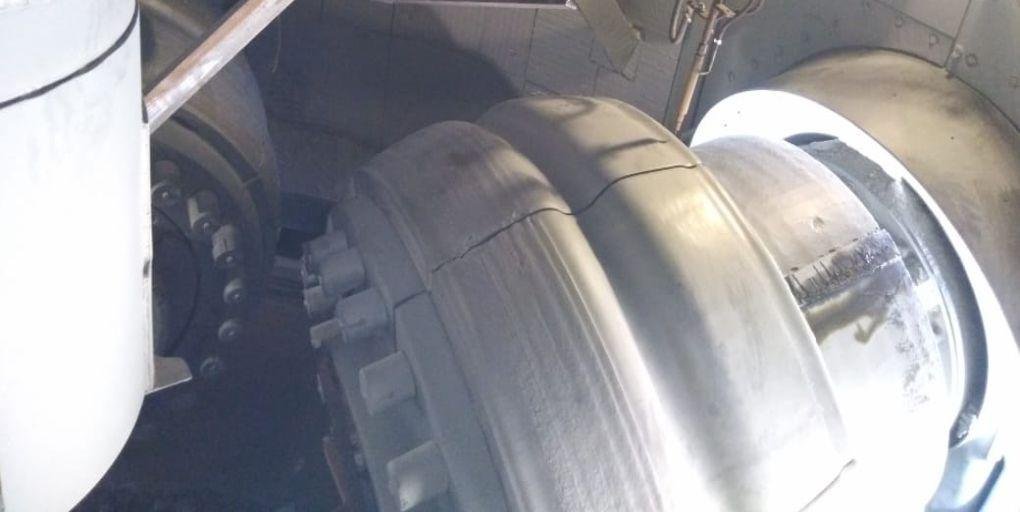
TONGLI ZJTL 3630 vertical roller mill has a 3-roller-system or sometimes 4 grinding roller depending on the raw material's grindability, which is pressed against the grinding table bed by a pressure frame, external pull rods and the hydraulic system, is a characteristic feature of the mill. The grinding rollers can be lifted with the help of the tensioning cylinders during start-up or for maintenance purposes. An ZJTL high-efficiency powder classifier sits on top of the grinding zone. The supply of fresh material is integrated in such a way that the fresh material and the grits from the classifier mix well and the material drops onto the centre of the grinding table for grinding. The tongli ZJTL 3630 distinguishes itself from raw meal limestone vertical mills through its process-related design, which is characterised by the increased grinding force, an adapted, reduced speed grinding table and lower gas velocities. The mechanical design is tailored to the higher abrasiveness of the material to be ground. The nozzle ring and other parts exposed to increased jet wear in the area of the grinding table are made of Ni-hard IV. The area of the classifier is provided with a ceramic lining, and the classifier rotor is hardfaced. The wear parts of the rollers and the grinding table are normally made of chromium alloy/cast iron and will be hardfaced at a later stage.
What is the process of hard facing? preparations, inspections, hands-on step by step instruction:
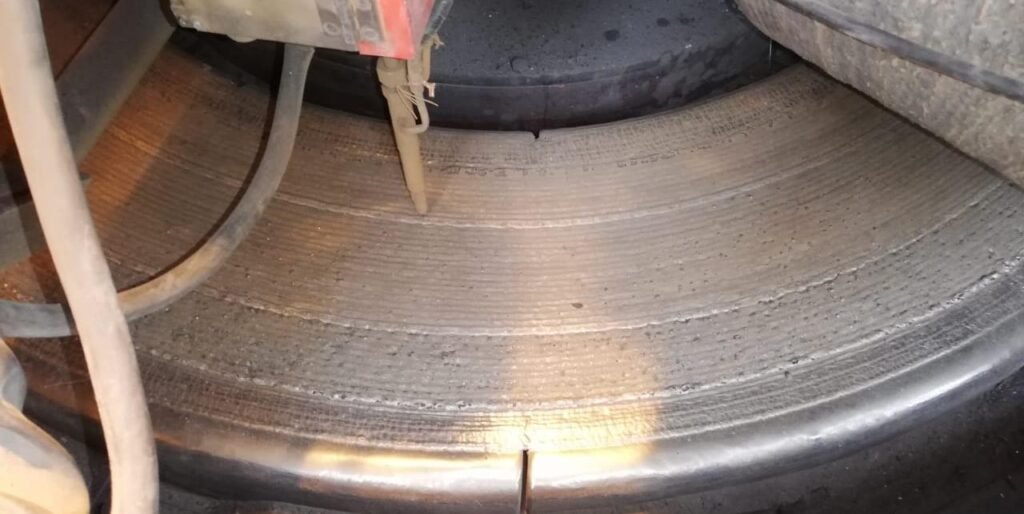
The hardfacing of vertical roller mill grinding rollers is a critical maintenance operation that restores the wear surfaces of rollers to extend their service life and maintain grinding efficiency. The process is usually carried out once the exact wear profile of the rollers has been determined. Knowing the wear profile ensures that welding is applied only where necessary, preventing overbuild and maintaining the correct roller geometry.
Step1: Preparation and Roller Lifting
- Before welding begins, the grinding rollers are lifted from the grinding table bed using the mill’s tensioning cylinders or lifting system.
- This lifting provides safe access to the worn surfaces of the rollers while keeping the assembly inside the mill, eliminating the need for complete disassembly or removal of the rollers.
Step 2: Rotating the Grinding Table(if grinding table needs hard facing otherwise skip this step)
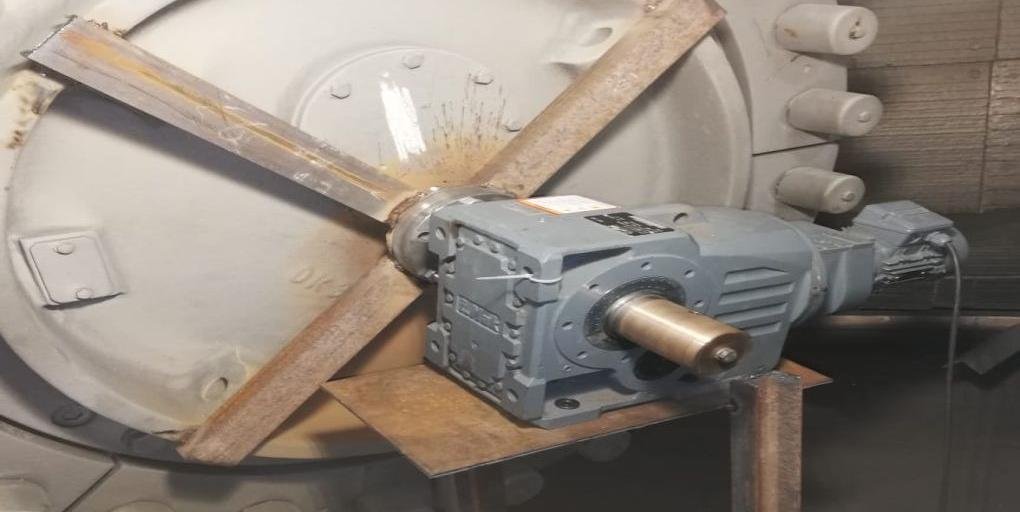
- During the hardfacing process, the grinding table is rotated using a variable-speed maintenance drive, which is integrated into the mill’s main gear system.
- Controlled rotation allows the welding to be performed evenly around the roller circumference, ensuring a uniform overlay and maintaining balance for later operation.
Step 3: Simultaneous Multi-Head Welding(Gangbang welding)
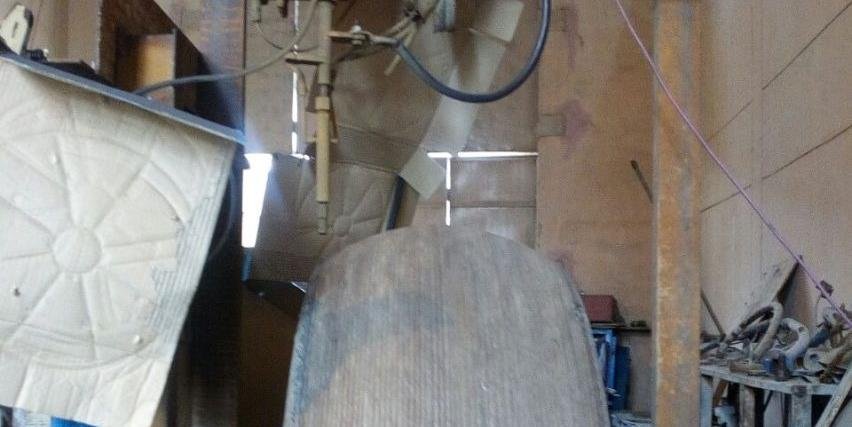
- Multiple weld heads are employed simultaneously to deposit the hardfacing material.
- This approach reduces welding time, ensures consistent heat distribution, and prevents localized overheating that could affect the roller material or its microstructure.
- The welding material is typically a high-chromium alloy or a metal matrix composite (MMC) designed for extreme wear resistance.
Step 4: Lowering and Welding Completion
- After initial welding passes, the rollers are gradually lowered back toward the grinding table.
- Welding continues as necessary while the rollers are supported and rotated by the grinding table itself, allowing for precise deposition and adherence to the desired wear profile.
Step 5: Finishing and Quality Control
- Once the hardfacing is complete, the rollers are allowed to cool.
- The welded surface is inspected to ensure there are no cracks, porosity, or excessive heat-affected zones.
- In some cases, minor machining or grinding may be performed to achieve the exact surface profile and correct height relative to the grinding table.
Benefits of In-Situ Hardfacing
- Performing hardfacing inside the mill minimizes downtime and avoids the labor and cost of removing heavy rollers.
- The process ensures even wear coverage, maintains the roller geometry, and extends the service life of the rollers and grinding table.
- Using high-performance hardfacing materials ensures improved abrasion resistance, reduces future maintenance frequency, and optimizes grinding efficiency.
Service Life of Wear-Resistant Layers and Hardgrove Grindability Index (HGI) for Common Materials in Vertical Roller Mills
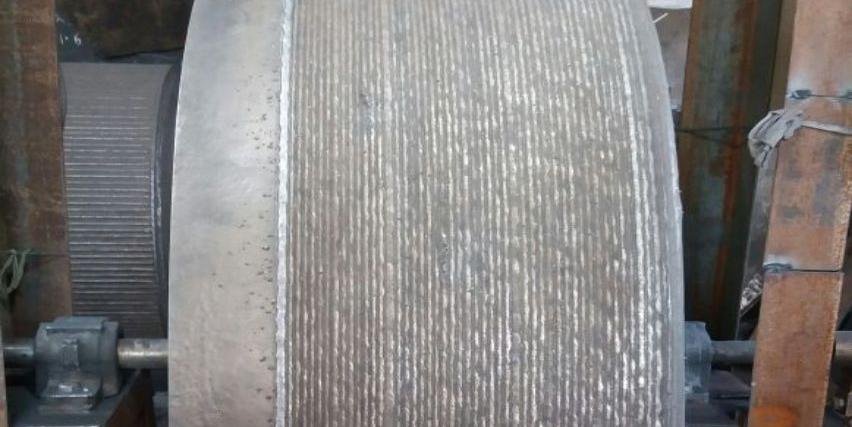
So below we have table that has the average service life time of vertical rolle mill hard facing for different materials and their HGI(Hardgrove Grindability Index ), notice this estimation is under general working conditions, using common surfacing wear - resistant materials.
| Material | Service Life of Wear - Resistant Layer | Hardgrove Grindability Index (HGI) |
| Cement Raw Meal | 6000 - 8000 hours | 50 - 70 |
| Coal (Bituminous Coal) | 8000 - 12000 hours | 70 - 90 |
| Coal (Anthracite) | 5000 - 8000 hours | 45 - 70 |
| Slag (Granulated Blast Furnace Slag) | 1000 - 3000 hours | 30 - 50 |
| Limestone | 5000 - 7000 hours | 60 - 80 |
| Quartz Sand | 1000 - 2000 hours | 20 - 30 |
| Clay | 6000 - 9000 hours | 65 - 85 |
| Gypsum | 4000 - 6000 hours | 45 - 65 |
| Iron Ore | 800 - 2000 hours | 35 - 55 |
| Copper Ore | 1000 - 2500 hours | 40 - 60 |
| Lead - Zinc Ore | 1200 - 3000 hours | 40 - 65 |
| Fly Ash | 7000 - 10000 hours | 55 - 75 |
| Furnace Slag | 1500 - 3500 hours | 35 - 50 |
| Shale | 5000 - 8000 hours | 50 - 70 |
| Dolomite | 6000 - 8000 hours | 60 - 80 |
| Bentonite | 7000 - 10000 hours | 70 - 90 |
| Diatomite | 8000 - 12000 hours | 80 - 100 |
| Kaolin | 7000 - 10000 hours | 75 - 95 |
| Feldspar | 4000 - 6000 hours | 45 - 65 |
| Mica | 5000 - 7000 hours | 50 - 70 |
Your Biggest concern: what factors contributes to the service life time of the vertical roller mill grinding roller hard facing:
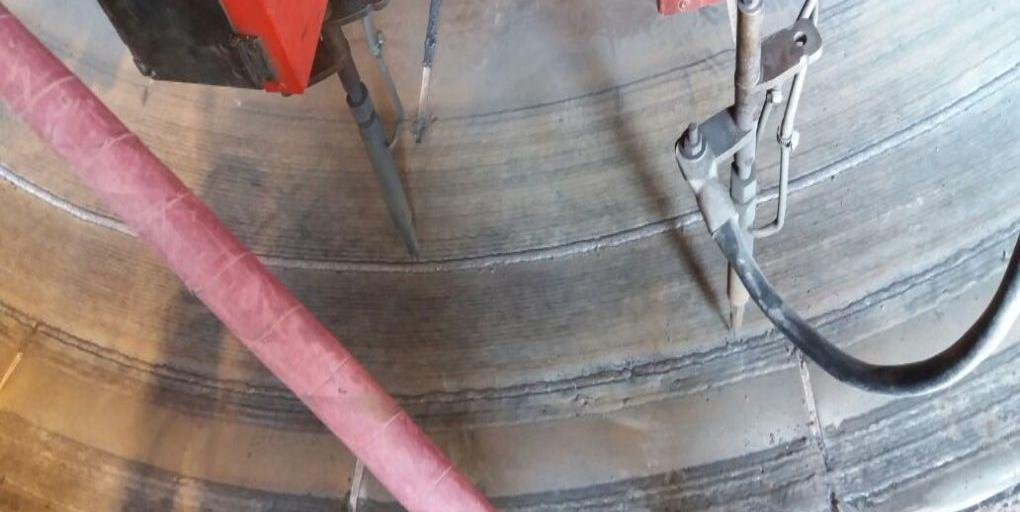
Material properties
Material hardness, abrasiveness, and Hardgrove Grindability Index (HGI) are key factors in determining the life of weld overlays. For example, high-hardness materials with an HGI value below 40 (such as quartz sand and blast furnace slag), often containing more than 30% quartz, can increase the wear rate of the weld overlay by 3-5 times, shortening its service life to 1,000-2,000 hours. On the other hand, less abrasive materials with an HGI value above 70 (such as bituminous coal and bentonite) can extend the life of the weld overlay to 8,000-12,000 hours. Furthermore, if free metal particles (such as elemental iron in slag) or coarse particles larger than 5mm account for more than 10% of the material, they can cause localized impact wear, leading to premature spalling of the weld overlay and reducing its life by 20%-30%.
Material Composition: Silica and Abrasive Content
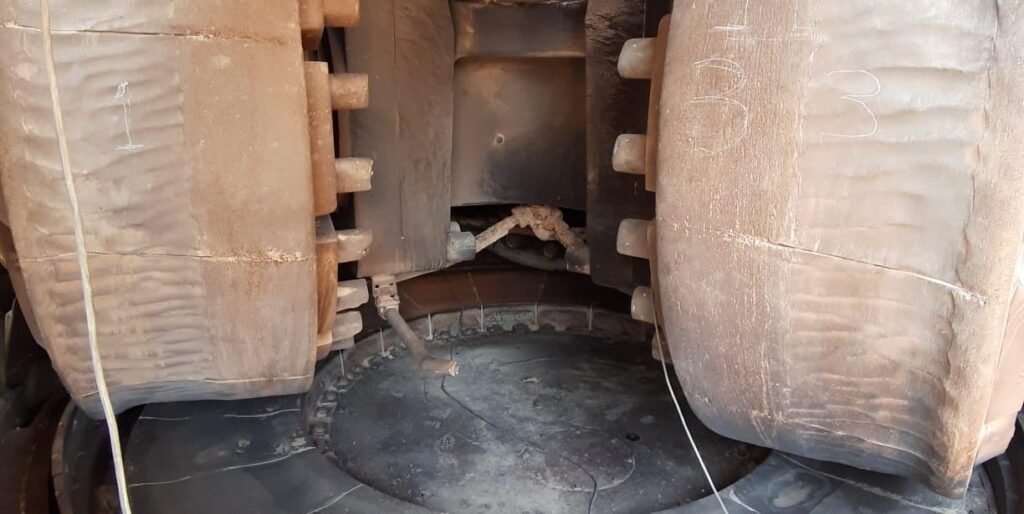
The chemical makeup of the material being ground—most notably its silica content and overall abrasiveness—has a major influence on how quickly hardfaced surfaces (like VRM roller sleeves) wear down. Materials with higher silica levels tend to be more abrasive, which speeds up the breakdown of the hardfaced layer. For instance, common grinding materials like slag and cement clinker often have silica contents that can drive faster wear if not properly addressed with suitable hardfacing solutions. In fact, slag—particularly steel slag—is even more difficult to grind than clinker, thanks to its higher hardness and silica concentration, making it an even greater contributor to accelerated hardfaced wear in VRM operations.
Hardfacing Material Composition
The alloy composition of the cladding material directly affects its wear resistance. High-chromium alloy cladding layers with a chromium content of 12%-15% and a carbide content of 30% or more can achieve a lifespan of 3,000-4,000 hours when grinding slag, a 2-3 times increase compared to conventional low-alloy materials (chromium content of 5%-8%). Adding an appropriate amount of molybdenum (Mo) to the cladding material further improves the high-temperature strength and tempering resistance of the cladding layer, extending its life by 10%-20% when processing high-temperature materials (such as cement clinker). The addition of boron (B) refines the cladding layer's microstructure, enhancing its hardness and wear resistance, and is particularly effective when grinding high-hardness materials.
Hard facing Welding Process Parameters
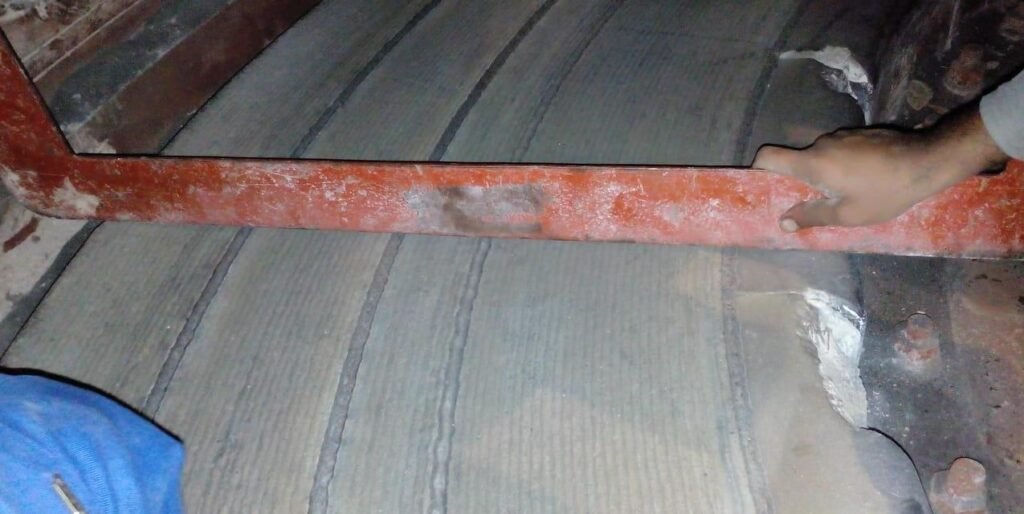
Welding process parameters are also crucial: When welding current fluctuations exceed ±50A and interpass temperatures exceed 300°C, microcracks are prone to forming in the overlay layer, reducing fatigue resistance by 40%. Using multiple thin-layer overlay passes (single-pass thickness ≤ 3mm) combined with a stress relief treatment at 500°C for 2 hours can increase the overlay bond strength to over 450 MPa, significantly reducing the risk of spalling during use. Excessively fast welding speeds can lead to uneven overlay thickness, with some areas being too thin. This can easily lead to wear and penetration during the grinding process, shortening the overall overlay life. Welding speeds that are too slow not only reduce efficiency but also prolong the heating time of the base metal, expanding the heat-affected zone (HAZ), potentially degrading base metal properties and compromising the bond quality between the overlay layer and the base metal.
Base Material Quality
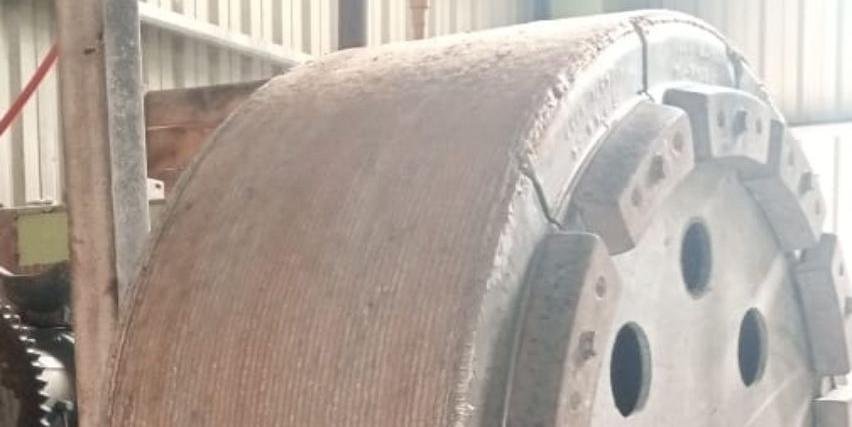
The quality and condition of the base material itself have a significant impact on the life of the grinding roller hard facing. Casting defects in the base material, such as internal pores, slag inclusions, and shrinkage cavities, can cause stress concentrations around these defects during the weld overlay process, leading to cracking of the weld overlay at the defects during use and significantly shortening its life. The base material's hardness and toughness must also match the weld overlay material. If the base material is too hard, high stresses can easily form at the interface with the hard surfacing, causing the wear-resistant hard facing to flake off when impacted by the material. If the base material is too soft, it will not provide sufficient support for the weld overlay, exacerbating deformation and accelerating wear during grinding. For example, for some hard base materials, appropriate annealing before weld overlay to reduce hardness and improve internal structure can effectively improve the bond strength and service life of the weld overlay.
VRM Feed Characteristics: Size, Moisture, and Uniformity
The particle size, moisture content, and uniformity of feed material all play a role in maintaining the VRM material bed’s stability and ensuring efficient grinding—and when these factors are off, they can speed up wear on hardfaced parts like roller sleeves and grinding table liners. For particle size: if more than 12% of the feed is oversized (surpassing 75% of the VRM roller gap, usually >22mm for a 30mm gap), it loosens the material bed. This makes the rollers exert extra pressure to break down large particles, boosting friction between the hardfaced surface and material while causing localized impact wear that cuts hardfacing life by 8–12%. For moisture content: when feed moisture goes above 5–7% (a common issue with cement raw meal or slag), fine particles clump together and stick to the hardfaced roller, forming a thick "material layer." This layer lowers grinding efficiency and creates uneven contact between the roller and new feed, leading to uneven wear—worst-case scenarios see the hardfaced layer wear 18–25% faster than with dry feed. What’s more, inconsistent feed (e.g., sudden 18%+ changes in hourly feed rate) causes grinding pressure (often ±0.4–0.9MPa) and mill airflow to fluctuate. These shifts stop the material bed from staying at a steady thickness, so the hardfaced surface alternates between bearing too much load and rubbing with no load. This speeds up fatigue wear and raises the chance of hardfacing spalling by 22–28%.
Equipment Operating Conditions

Vertical roller mill operating conditions, such as mill speed, grinding pressure, and material feed rate, significantly impact the life of the hardfacing vertical roller mill grinding rollers. Excessively high mill rotating speed increases the relative motion between the grinding rollers and the material, exacerbating wear on the clinker grinding roller hardfacing and slag grinding roller hardfacing layers. Statistics show that every 10% increase in speed can increase the wear rate by 15%-20%. Excessive grinding pressure intensifies the material's compressive effect on the weld overlay, causing plastic deformation and flaking on the surface, which even advanced ceramic composite hardfacing or high-temperature resistant hardfacing cannot fully prevent. Unstable material feed rates, with fluctuations in both high and low levels, can unevenly load the grinding rollers, potentially causing localized excessive wear on the flux-cored hardfacing wire weld overlay. A significant increase in feed rate over a short period of time can cause the grinding rollers to experience excessive pressure, leading to cracks or even detachment of the weld overlay. Understanding how to hardface vertical roller mill grinding rollers, the benefits of hardfacing VRM grinding rollers, and applying cost-effective hardfacing solutions for VRMs is therefore essential to ensuring extended service life and reliable operation.
Regular maintenance
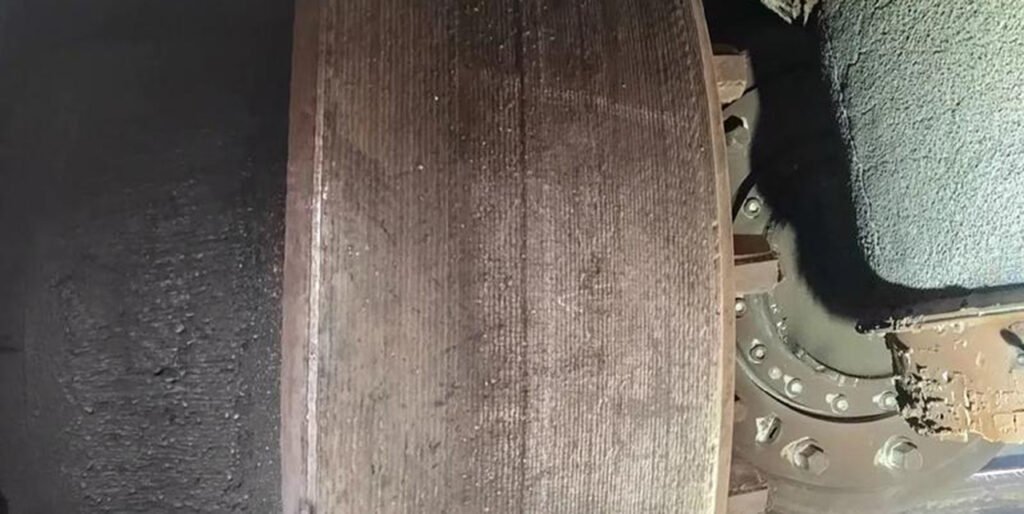
Regular maintenance such as proper lubrication of moving parts and timely inspections of key components—is essential for prolonging the service life of hardfaced grinding rollers. Insufficient lubrication, for example, can raise friction levels between mechanical parts (like roller bearings), which not only adds strain to the system but also indirectly speeds up wear on the hardfaced layer. Similarly, skipping routine component checks may let small, hidden issues (such as minor cracks in the hardfacing or misaligned rollers) go unnoticed; these problems often worsen over time and accelerate the degradation of the hardfaced surface. By putting a proactive maintenance schedule in place—with set intervals for lubrication checks and visual/non-destructive inspections—operators can spot and fix potential issues early, before they escalate into problems that cause significant, premature wear to the hardfaced rollers.
Operator skill
Operator habits and routine equipment maintenance practices are also closely related to the life of the hard facing. Frequent starting and stopping of the vertical mill subjects the rollers to drastic temperature and pressure fluctuations, generating thermal and mechanical stresses that accelerate fatigue damage to the weld overlay. Compared to stable operation, frequent starts and stops can reduce the life of the weld overlay by 30%-40%. Failure to promptly clean material adhering to the roller surface during operation can lead to uneven accumulation, resulting in uneven force on the roller during rotation and accelerated wear of the weld overlay. Furthermore, neglecting lubrication and maintenance of components such as the roller bearings during routine maintenance increases operating resistance, indirectly increasing the load on the roller and shortening the life of the hard facing. For example, poorly lubricated roller bearings can cause uneven operation, leading to vibration and increased localized wear of the weld overlay.
Surface Cleaning Treatment Before hard facing
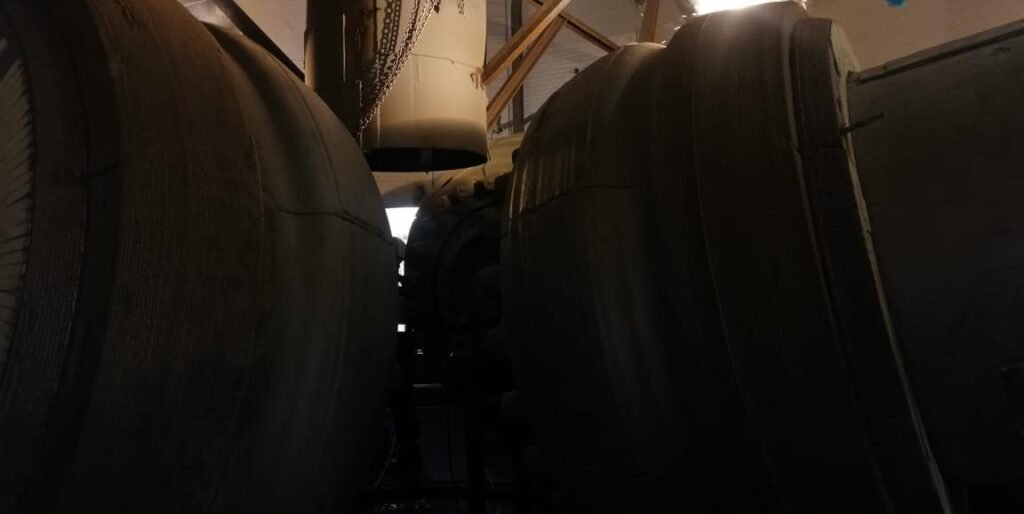
The surface treatment of the grinding roller before harding facing directly affects the bond strength between the hard facing and the base material. Impurities such as oil, rust, and scale on the grinding roller surface can hinder fusion between the weld overlay and the base material during the welding process, resulting in a weak interface and easy peeling of the weld overlay during use. Using appropriate surface treatment methods, such as mechanical grinding and sandblasting, to remove surface impurities and create a certain degree of surface roughness, can increase the contact area between the hard surfacing weld and the base material, improving the bond strength. Sandblasted grinding roller surfaces can increase the bond strength of the weld overlay by 20%-30% compared to untreated surfaces, effectively extending the service life of the weld overlay. But one thing to note that in a in-situ onsite condition sandblasting is not possible, therefore can do some manual cleaning instead.
Number and Thickness of hard facing
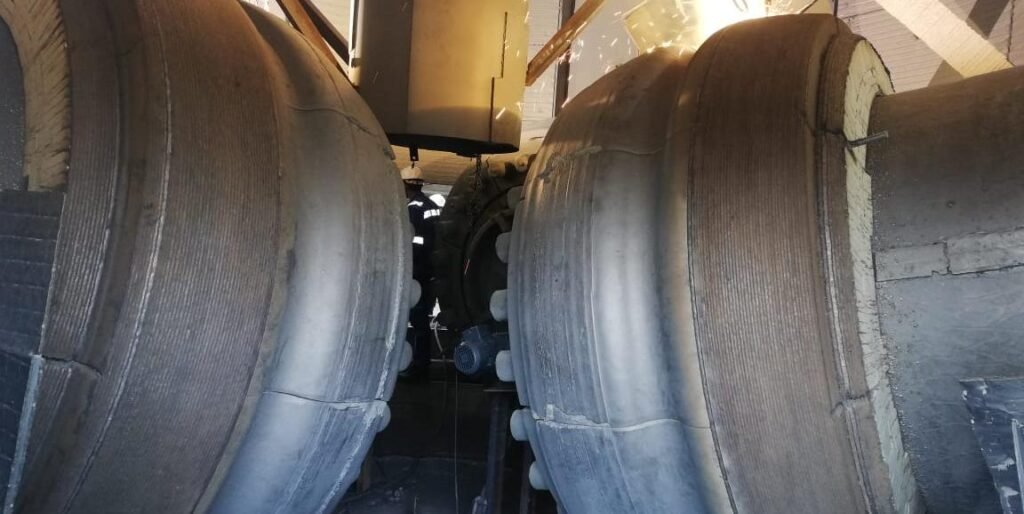
The number and thickness of overlay layers should be determined based on actual operating conditions and material properties. If the overlay layer is too thin, it may quickly wear out when working with hard, abrasive materials, rendering it ineffective. Excessively thick overlay layers not only increase overlay costs but can also cause excessive stress during the overlay process, leading to cracks and spalling. Generally speaking, for moderately abrasive materials, two to three overlay layers with a total thickness of 8-12mm is appropriate. For highly abrasive materials, three to five overlay layers with a total thickness of 15-20mm may be required. However, the specific number of layers and thickness should be optimized based on actual material conditions and equipment operating data.
Environmental Factors
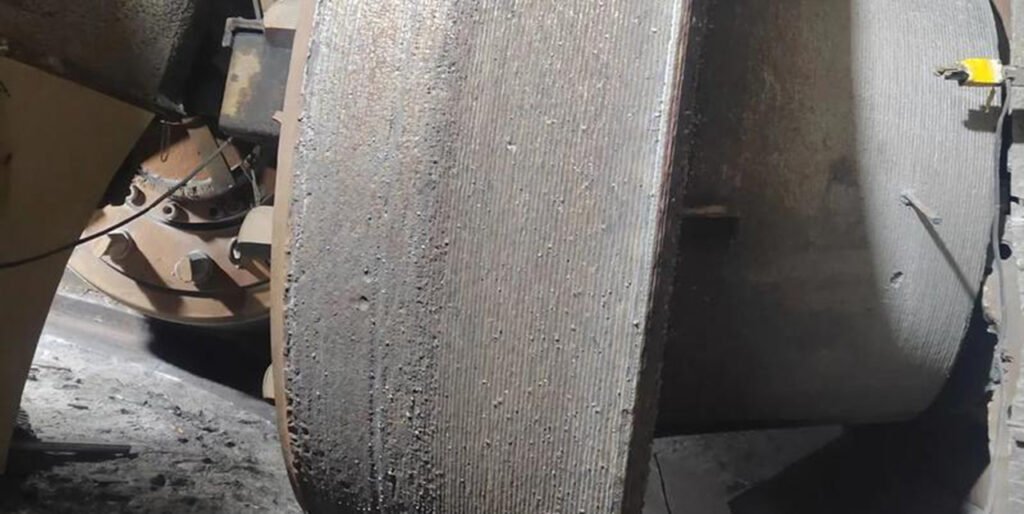
Ambient temperature and humidity in vertical roller mills (VRM) can also affect the lifespan of hardfacing vertical roller mill grinding rollers. High temperatures can reduce the hardness of the grinding roller hardfacing welding layer and lower its wear resistance. For temperature-sensitive tungsten carbide hardfacing or other weld overlay materials, especially when ambient temperatures exceed 300°C, hardness can drop by 10%-15%, leading to accelerated wear. In humid environments, if there are tiny cracks or pores on the VRM roller hardfacing surface, moisture can easily penetrate, causing electrochemical corrosion and damaging the interface between the weld overlay and the base material, shortening its lifespan. For example, in some southern cement mill hardfacing applications, the high temperature and humidity in summer cause weld overlays on vertical mill rollers to wear significantly faster than in other seasons and regions.
Quality Inspection and Control
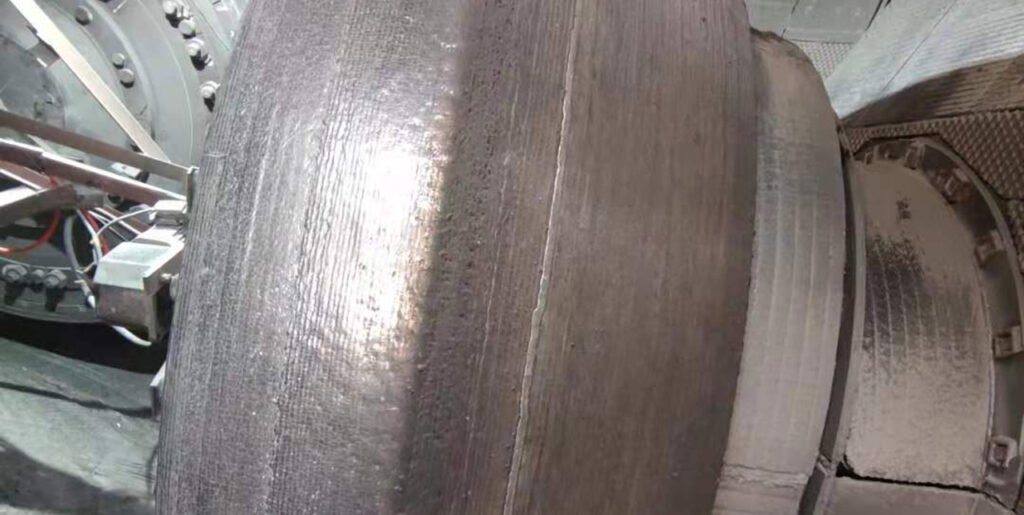
Quality inspection and control measures during the vertical mill hardfacing repair process can promptly detect defects in the weld overlay and allow for appropriate repair, thereby ensuring the quality and service life of the VRM grinding roller refurbishment. Real-time monitoring of parameters such as welding current, voltage, and interpass temperature during the hardfacing welding for grinding rollers ensures compliance with process requirements and effectively prevents weld defects caused by abnormal parameters. After the VRM roller hardfacing is completed, nondestructive testing methods such as ultrasonic testing and magnetic particle testing are used to thoroughly inspect the weld overlay layer to promptly detect defects such as internal cracks and pores. Repairing even the smallest defects in the hardfacing services for VRMs prevents them from expanding during equipment operation, thereby extending service life. Statistics show that weld overlays that undergo rigorous quality testing and control can extend their service life by 15%-25% compared to uninspected overlays, making hardfacing solutions for cement mill rollers far more cost-effective and reliable.
What are the component of a slag vertical roller mill grinding system? performance after upgrade in detail
Our first industrial-scale vertical roller mill for slag cement, an ZJTL 3630k, went into operation in tongxiang city is still in operation today. The capacity of this mill ranges from 58t/h slag with 4200cm²/g to 68t/h CEM III A or 43t/h CEM III B with slag content between 50–80% and fineness of 3500cm²/g and 4200cm²/g. The cement quality meets all the requirements of domestic market and even German standard. In 2007 this mill had an upgrade, was equipped with a new nozzle ring and an outer material recirculation system.The design principal concept is similar to our grinding plant system today which mainly consist of:
1. Equipment for Metering and Feeding Materials
The first stage in a vertical roller mill system involves precise metering and supplying of raw materials to the mill. For applications such as cement or slag grinding, the equipment ensures controlled feed rates of GGBFS, steel slag, or other raw feedstock.
- This includes feeders, conveyors, and upstream metal extraction devices that remove metallic particles before the material enters the mill.
- The upstream metal extraction system is particularly important for slag or steel mill applications, where pig iron or other metallic inclusions must be captured to protect the grinding rollers and table.
2. ZJTL 3630k Vertical Roller Mill
At the heart of the system is the ZJTL vertical roller mill, which performs the primary grinding operation.
- Equipped with a multi-roller grinding system, it applies pressure to the grinding table to pulverize feed materials.
- The mill can include a high-efficiency powder classifier integrated on top to ensure that only material meeting the required fineness is discharged, while coarse particles are returned for further grinding.
- The mill design accommodates highly abrasive materials and incorporates wear-resistant components such as chromium-alloy or cast-iron rollers, Ni-hard IV nozzle rings, and hardfaced grinding surfaces.
3. External Material Circulation System
To optimize grinding efficiency, a material circulation system is used.
- This system returns oversized particles from the classifier back to the mill for regrinding.
- A complementary metal extraction system is often integrated into the circulation loop to target already dried and liberated pig iron, preventing it from re-entering the mill and causing damage.
4. Process Gas Routing
The process gas routing system is critical for transporting ground material and maintaining proper mill operation.
- Hot gases are directed through the grinding zone to dry feed materials and carry them toward the classifier.
- Gas velocity and temperature are carefully controlled to optimize grinding efficiency, reduce wear, and prevent material agglomeration.
5. Dedusting and Product Removal
A baghouse filter dedusting system is incorporated downstream of the mill to remove airborne particles and maintain environmental compliance.
- Cyclones, bag filters, or electrostatic precipitators capture fine dust before the product is conveyed to storage or packaging.
- The product removal system ensures consistent discharge of the finished powder, maintaining uniform particle size and quality.
Performance of ZJTL 3630K vertical roller mill before and after upgrade:
While producing slag cement CEM III A 42.5 with 40% slag at a fineness of 5600cm²/g, the throughput could be increased by 30% and the specific power consumption of mill, separator and fan was reduced by more than 10% after the modernisation of the plant. Today more than 60 ZJTL vertical roller mills has installed for slag, cement and binding agents with capacities from about 20t/h up to 300t/h are used or under contract for slag powder and the production of virtually all cements of various compositions commonly used worldwide. The mills achieve finenesses ranging from 2000cm2/g to 7000cm2/g in the case of binding agents containing cement. An ZJTL 3630K with an installed power of 5500kW started production at the end of 2006 in China. It is guaranteed for 120t/h of GGBFS at a fineness of 5000cm2/g or 180t/h with a fineness of 4000cm2/g. The same mill size ZJTL 3630K with 5500kW installed power was sold in 2006 to domestic customer for 150t/h slag at a fineness of 4200 Blaine. As a comparison, for OPC at a fineness of 3200cm2/g the capacity of an ZTJL 3630K can be expected to reach 285t/h.
FAQ: Frequently asked question about vrm cement mill grinding roller hard facing:
The primary purpose of hardfacing in vertical roller mills is to extend the wear life of the grinding rollers and tables, which are constantly exposed to severe abrasion from raw materials, clinker, or slag. By applying a high-hardness overlay, the wear rate can be reduced by more than half, meaning longer intervals between maintenance stops and lower replacement costs. Beyond economics, the process ensures that the grinding profile remains closer to design specifications, which helps maintain mill efficiency and reduces power consumption. Experienced operators also note that a consistent grinding surface leads to more stable mill operation and fewer vibration issues.
The interval between hardfacing cycles depends heavily on operating conditions. Mills processing abrasive materials such as granulated blast furnace slag generally require more frequent attention than those grinding softer raw meal. While some suppliers report service lives of up to 20,000 hours with advanced overlays, many plants plan a hardfacing cycle roughly once per year as part of their shutdown schedule. The decision is typically based on wear measurements and production targets, and companies with predictive maintenance programs often monitor wear online to optimize timing. if you think the above is too vague so I will give you an example for grinding slag like granulated furnace slag GGBFS, the hadrfacing period is often time between 1000-1800 hours based on the grindability.
The overlay composition is critical to performance. Chromium carbide remains the industry standard due to its balance of hardness and toughness, but newer technologies incorporate ceramic-metal composites or nano-structured carbides that offer even higher wear resistance. Some wires also include molybdenum or niobium to improve toughness and reduce cracking risk. Expert welding engineers select alloys depending on whether the application is high-abrasion with low impact (cement raw meal) or high-impact with moderate abrasion (clinker, slag).
Yes, our ZJTL VRM hardfacing is carried out directly inside the mill without dismantling major components. Specialized automatic welding equipment allows operators to rebuild rollers and tables on site, minimizing downtime and transport costs. However, in cases of extremely heavy wear or when re-profiling is needed beyond welding capacity, components may be removed and rebuilt in a workshop environment. The in situ method has become the preferred industry practice because it allows plants to resume production much faster.
Hardfaced overlays generally achieve hardness values in the range of 55–67 HRC, depending on the alloy system. For comparison, the base material of rollers is typically below 30 HRC, so the improvement is substantial. High hardness translates directly into longer wear life, but operators must also consider toughness, as excessively brittle overlays can spall under impact. For slag grinding, a balance is important—slightly lower hardness with higher toughness may perform better in practice than the hardest possible overlay.
The cost benefit is not limited to fewer spare parts. By maintaining the grinding profile, hardfaced rollers consume less power, as the mill doesn’t need to compensate for geometry loss. This can reduce specific energy consumption by several kWh per ton. Moreover, fewer shutdowns mean higher plant availability and production reliability. Studies in cement plants have shown wear reduction of more than 50%, which can translate to millions in savings over the lifetime of the mill.
Hardfacing is not just about applying a layer of weld metal; it requires precise control of welding parameters, deposition thickness, and pre-/post-heating practices to avoid cracks or distortion. Improper application may lead to uneven profiles, resulting in higher vibration levels or even premature failure. Another challenge is dilution—if too much base metal mixes into the overlay, the wear resistance drops sharply. That’s why experienced teams and automated welding equipment are crucial for consistent quality.
Several suppliers have built strong reputations in this niche. Welding Alloys introduced MillCarb™, a composite overlay plate technology that has demonstrated service lives up to three times longer than conventional welds. Ibermaros (IBERMILL) is another well-known provider, offering tailored hardfacing programs for rollers and tables. Jungwon is recognized for developing high-hardness wires and liners that withstand extreme conditions. These brand names often come up in cement industry circles when plants benchmark performance, also of course our Tongli.
Flux-cored arc welding (FCAW) is by far the most common method due to its high deposition rate and suitability for large surfaces. Other processes such as shielded metal arc welding, submerged arc welding, or even plasma transferred arc and laser cladding are used for specific applications where precision or metallurgical control is required. The choice depends on the roller design, the overlay alloy, and whether the work is performed in situ or in a workshop. Each method has trade-offs between cost, speed, and metallurgical quality.
After welding, the surface must be ground or machined to restore the correct profile. Even small deviations can affect the material bed and gas flow in the mill, leading to reduced efficiency or higher vibration. Routine inspections with laser scanners or wear measurement tools are used to track the geometry of rollers and tables. Some mills also rotate roller segments to distribute wear more evenly, extending the life of the component before the next hardfacing cycle.
Conclusion:
Hardfacing of vertical roller mill grinding rollers is a critical maintenance practice that directly impacts equipment reliability, wear resistance, and overall plant efficiency. By applying advanced hardfacing welding technologies, using optimized materials, and implementing strict quality control measures, the lifespan of grinding rollers can be significantly extended, reducing downtime and lowering operating costs for cement, slag, and clinker grinding operations. At Tongli, we take this one step further. While many companies perform grinding roller hardfacing purely as a paid service, we are first and foremost a manufacturer of vertical roller mills. This means we provide hardfacing as a value-added service—not just a business transaction. Our advantage lies in offering this service at a more competitive cost, backed by staff who are not only highly skilled in hardfacing but also deeply experienced in vertical roller mill installation and operation. This unique expertise allows us to perform a professional check-up of your mill’s operating status during the hardfacing process, ensuring both the repair and the machine’s performance are optimized. By choosing Tongli, you gain more than just hardfacing—you gain a long-term partner committed to maximizing the performance, durability, and cost-effectiveness of your vertical roller mill. ok so this article is about to end and below we have some video and spare parts of vertical roller mill spare parts we offer.

